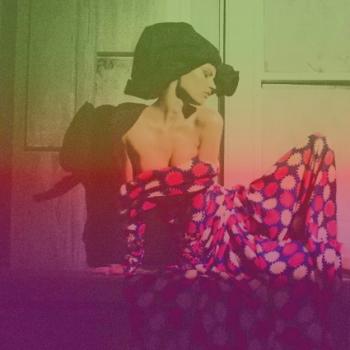Fashion films break ground

via YouTube.com
November 20, 2014
From Baz Luhrmann’s “Chanel No. 5: The One That I Want” to Vogue’s “Cover Girl,” which featured Lena Dunham, fashion films are a genre finally making their mark in cinematography, and they are here to stay.
Fashion films have recently emerged as a means for high fashion to come alive to the masses. The films have a history that is both evolutionary and revolutionary, beginning in the 1980s with music videos. In 1981, MTV became the ultimate authority of youth culture. Pop stars like Madonna and Michael Jackson found new idolatry as style icons, and the intersection between fashion, performers and film continued through the following decades.
Seeing a need for a new platform on which fashion films could take center stage, Nick Knight created SHOWstudio. Founded and directed in 2000, the project prides itself as the “Home of Fashion Film” and pushes the boundaries of communicating fashion using the Internet. With early collaborators like Alexander McQueen and John Galliano, the platform continues to be a leading producer of fashion films that blend conceptual aesthetics with the latest high fashion. With this addition to the industry, the Internet began to bring high fashion to a wider audience.
Continuing this spread of fashion, the launch of YouTube in 2005 once again shook the world of youth culture as YouTube quickly surpassed MTV as the medium to watch music videos. In 2009, a crucial turning point arrived when Tom Ford made his directorial debut with the fashion film “A Single Man.” While Ford had a $7 million budget, many other designers could not follow suit in this pricey endeavor, thus making fashion films the greatest opportunity for up-and-coming filmmakers desiring the auteur lifestyle or complete creative control.
Since then, there have been a variety fashion films. One can learn from the informational series “Inside Chanel” or laugh at the humorous shorts from T by Alexander Wang. The power of femininity is displayed in Miu Miu’s female directorial showcases titled “Women’s Tales” and the joy of romance is experienced in L.A. label Wren’s video “First Kiss.”
The film world itself has also grown with the addition of festivals specifically for fashion films. The New York Fashion Film Festival was started in 2010, and according to its website “seeks to investigate the evolving genre of fashion film and explore its influenc e and impact on the fashion industry.”
According to Chris Labdza and Bon Duke’s T Magazine blog post, fashion films are gaining this attention because “there is an emerging generation of filmmakers turning their focus to fashion as a platform for social critique.” For instance, Lena Dunham in “Cover Girl” for Vogue humorously displayed her insecurities about being on the cover of the fashion bible that is Vogue magazine, showing the humanity of celebrities and high power insiders of the fashion industry.
In addition to inciting social critique and breaking stereotypes about the industry, the films make high fashion available to the masses. This accessibility ultimately allows for something high fashion can lack — relatability. Collections can now be appreciated by anyone — a dad waiting for his kids to finish soccer practice, a high-power lawyer sitting at her desk or a high school girl stuck on her laptop in the suburbs. In a world where a majority of the masses owns an Apple product and is found on numerous social media platforms, it is no surprise that the industry is heavily investing in this new media that is revolutionizing modern society.
Fashion films are here to stay, and they will continue to evolve and revolutionize how the world views ready-to-wear and haute couture. Clothing comes alive when worn, and fashion films now allow the world to see these exquisite works of art live their lives to the fullest. After all, fashion is arguably something that should be viewed, rather than simply written about.
A version of this article appeared in the print version of Fringe Fall 2014. Email Gabriella Bower at [email protected].
























































































































































